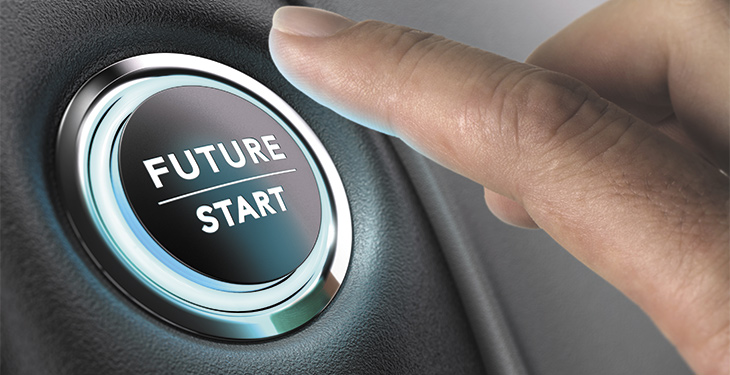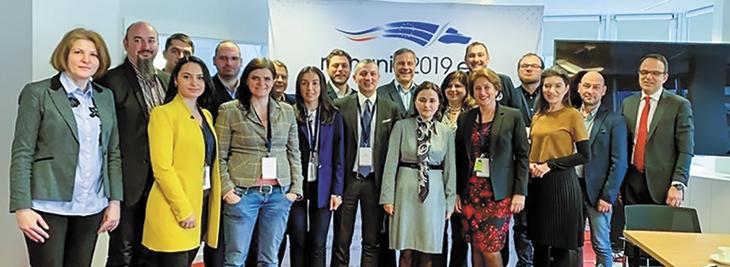Romania currently holds, for the first time in history, the presidency of the Council of the European Union. While waiting for this event, depending on the commentator, the risks or opportunities of this premiere were highlighted. I had the opportunity of being in Brussels for five weeks during Romania’s mandate, and the newly acquired understanding tells me that this responsibility is, more than anything else, a test.
RISKS “Romania is not prepared to take over the presidency of the Council of the European Union”, said two important Romanian leaders, adversaries on the internal political scene. Romania’s president, Klaus Iohannis (November 2018) was speaking about the “chaos” in the Government, which prevents any perspective „of good government and involvement in European affairs”. The same diagnosis had been put earlier (October 2018) by the President of the Senate, the leader of one of the governing parties, Călin Popescu Tăriceanu: “In the context of the current total political war [between the governing parties and the opposition], Romania is not prepared to take over the presidency of the EU Council”.
ALSO READ The Sibiu Declaration – generous principles to be tested very soon
Concerns have been straightened by such statements and were fueled not only by the internal situation, but also by the complicated moment in which Romania exercises its mandate: the last months of a troubled and uncertain BREXIT, disputes harsher than ever in the last decades between EU and SUA, the perspective of European elections crucial for the future of the community. With over 300 files in the agenda and a much shorter effective work interval than usually, Romania seemed condemned to fail.
It turned out that these fears were well exaggerated. The standard negotiation and communication procedures, the experience and guidance of the General Secretariat of the Council, as well as the large number of Romanians working in all European institutions have annihilated risks and partly transformed them into opportunities.
OPPORTUNITIES A successful presidency is one in which European projects are developed, a semester in which a large number of legislative files in progress are advancing, six months in which, under the technical and political mediation of a state, important EU decisions are adopted by adjusting the adverse stands of all member states and European political groups.
The end of the EU parliamentary mandate has helped Romania, because many of politicians preparing for national elections were inclined to make compromise in order to present their voters with a solid package of successes. Furthermore, European Commissioners, together with their teams, at the end of their missions, most of them having minimum chances of maintaining their positions, are trying to make the most of it in the last minute. With a new political configuration after May 26th, 2019, there is a risk that files negotiated for 4 or 5 year to be postponed or put back to discussion in 2020.
ALSO READ European elections on May 26 – 3 reasons why it is important
In this context, Romania has coordinated the advance of 68 files in only two months; in six cases it obtained provisional agreements with the European Parliament – which means that adoption is almost certain –, in some cases closing discussion which were on-going for years. The update of the legal framework regarding copyrights is an example.
THE GAS DIRECTIVE Probably the most spectacular, because it was not expected, is the political agreement with the European Parliament regarding the proposal to review the Natural Gas Directive, after two mandates (Bulgarian and Austrian) in which dynamic was almost imperceptible.
The agreement promises to strengthen the position of the EU (of the European Commission especially) in relation to third party countries with regard to natural gas interconnections and contributes in maintaining the hope that (common) principles and values could be stronger that (political, individual) interests.
EMISSION STANDARDS FOR NEW VEHICLES Member states have approved in January stricter standards for the CO2 emission of new vehicles and new light utility vehicles. The new norms will guarantee the fact that, starting with 2030, new vehicles will issue, in average, with 37,5% less CO2, and new trucks with an average of 31% CO2, compared to the levels of 2021. Between 2025 and 2029, both cars and trucks will have the obligation of issuing with 15% less CO2. Stricter testing norms will be introduced, and the stricter obligations will stimulate investments and innovation in clean technologies, such as batteries and e-charging infrastructure. Furthermore, the Parliament and Council have agreed on a mechanism for encouraging the sale of a large number of vehicles with zero emissions and low emissions, such as rechargeable full electrical or hybrid vehicles. The criteria will favor states in which vehicles with reduced emissions have smaller market shares. Until 2020, the Commission will review the current European Directive regarding the labelling of vehicles in order to offer users additional information; it will also asses the options of introducing a label indicating the fuel efficiency and the CO2 emissions for trucks.
EMISSION STANDARDS FOR NEW TRUCKS In February, the Presidency of the EU Council reached a temporary agreement with the European Parliament for introducing the first European targets of reducing the CO2 emissions of trucks. The new norms will ensure the fact that between 2025 and 2029 new trucks will issue with an average of 15% less CO2 compared to the emissions levels of 2019, and 2030, they will be forced to issue with an average of 30% less CO2.
LONGER CABINS, LOWER CONSUMPTION A temporary agreement, meaning that it will be subjected to the subsequent approval of member states (usually a strictly formal stage), was also obtained for introducing more quickly longer and more aerodynamic cabins in trucks, in order to have an impact on the consumption of fuel.
MORE ENERGY EFFICIENT TIRES In March, the Council adopted a negotiating position with regard to the labelling of tires, in relation to their energy performance and has extended the scope to heavy vehicle tires. After the European Parliament will adopt its position in relation to the file, inter-institutional negotiations can begin.
INVEST EU Financially speaking, the Council has adopted its position in relation to the Commission’s proposal to gather in a single program, InvestEU, all the 14 different financial instruments currently available for supporting investments in EU. Among these instruments there is also the European Energy Efficiency Fund (EEEF), the Marguerite Fund, the LIFE Program for environmental and climatic policies, Private financing for energy efficiency (PF4EE), the Connecting Europe Facility (CEF). The InvestEU program will have the European Investment Bank as main partner but will also allow other implementation partners to access directly the EU guarantee. The amounts and allocation methods for InvestEU will be established in the next 2021-2027 EU budget.
POLITICAL COMMITMENTS In February, the Council has estimated that 2019 is a “critical year for accelerating internal climatic actions” and has underlined the fact that “climate actions do not only mean reducing the emissions of greenhouse gases, but also approaching the effects of climatic change on peace and security”. Through the voice of the Council, EU has reaffirmed its commitment towards the Paris Agreement. At the Sibiu Summit (May), the European Council, reuniting the leaders of EU states or governments, will present the long-term political priorities for a neutral economy from a climate point of view. These priorities and the methods of meeting them, especially, are currently the subject of lively debates. The European Commission’s perspective “A clean planet for all”, launched in November 2018, was analyzed both in the Energy Council and in the Environment Council.
A NEW VISION All these create the conditions for shaping not only punctual decisions, but especially a new vision for the future of the European Union. For almost three decades, the Union had as main objective expanding in the East and getting back home half a continent after the end of the Cold War. The new challenges are obvious today, from the erosion of democratic and liberal values, to misinformation and other asymmetric aggressions. However, the Union’s priorities, also obvious in the budget’s structure (more details in pages 20-21), remain cohesion and a common internal market and, above all, environmental protection. The commitments undertaken through the Paris Agreement and the technological performance in areas such as energy, transports and the environment are the most plausible points of consensus and coagulation for politicians of the members states and for European citizens alike.
The editorial coverage of the Romanian presidency of the European Union Council, in energynomics Magazine and online, on www.energynomics.ro, was supported by the team of the Permanent Representation of Romania to the European Union and made possible by means of the JTI Scholarships for Journalists, a program which, for almost 20 years, encourages professional training in the field of European policies.
—————————————-
This analysis firstly appeared in the printed edition of energynomics.ro Magazine, issued in March 2019.
In order to receive the printed or electronic this issue of energynomics.ro Magazine, we encourage you to write us at office [at] energynomics.ro to include you in our distribution list. All previous editions are available HERE.


